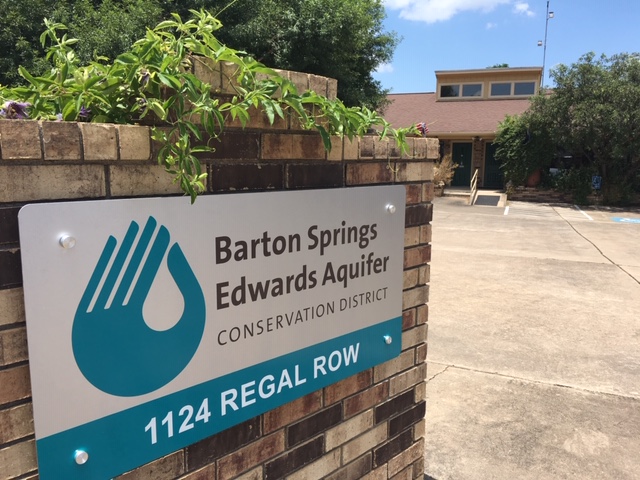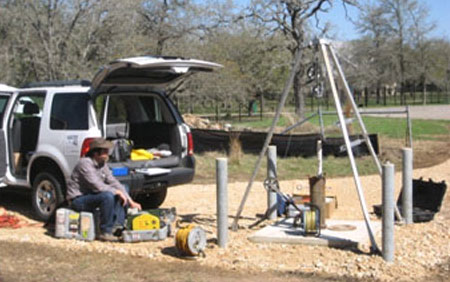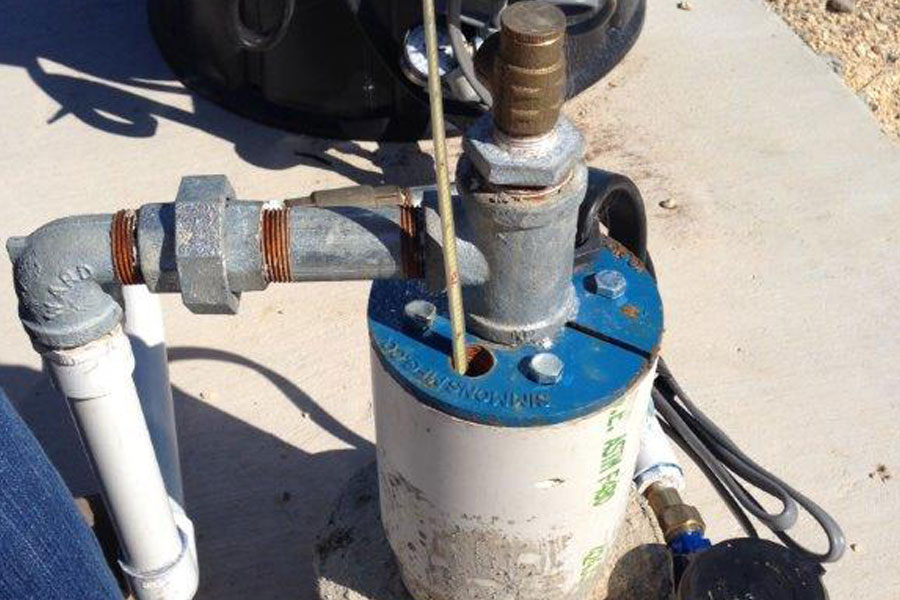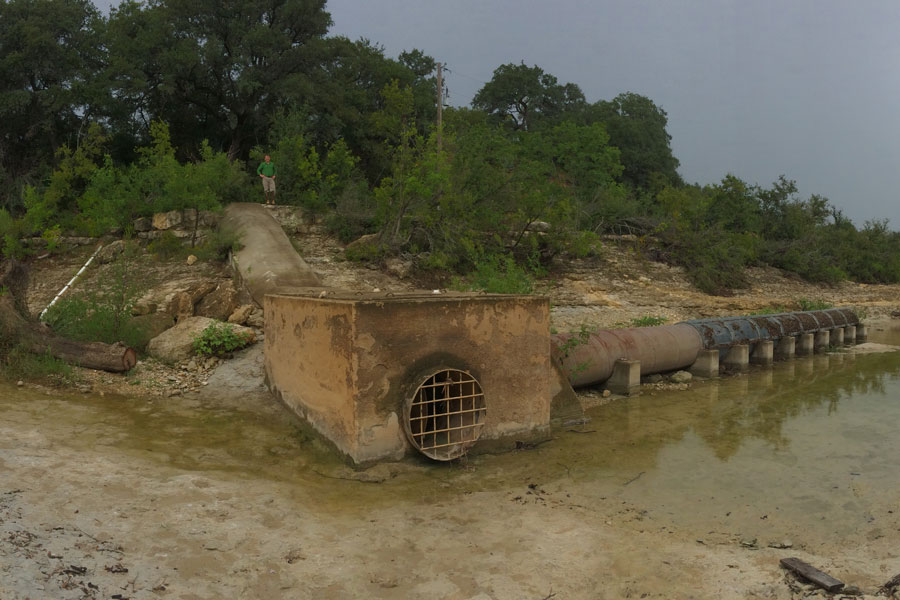Management Advisory Committee (MAC)
Purpose of MAC
Section 6 of the Habitat Conservation Plan (HCP) details the roles of the plan participants, and includes, in Section 6.5.1.2, the development of a District HCP Management Advisory Committee (MAC) to advise and assist in the coordination of conservation activities affecting Covered Species at Barton Springs, and to monitor the implementation of the District HCP, both for the District and for the USFWS, as an additional measure of ensuring continued implementation of the HCP and compliance with the ITP.
Per the District HCP, the MAC will:
- Provide a forum for exchange of information relative to Covered Species;
- Provide advice on Covered Species management activities;
- Advise the District on priorities for conservation actions; and
- Provide input and recommendations, as warranted, on the development and implementation of actions through the adaptive management program.
In November 2012, the District Board of Directors approved a range of interests to be represented on the MAC. After the District staff identified potential candidates for MAC service and vetted their interest in volunteering to provide such service, the Board considered all options and appointed the initial MAC in February 2013.
Current MAC Members
These members have been appointed by the District Board of Directors to represent the interest areas shown:
- Cindy Loeffler, Texas Parks & Wildlife Department (TPWD)
- Jennifer Walker, Sierra Club (Environmental Community)
- Nathan Bendik, City of Austin Watershed Protection Dept. (Salamander biologist)
- Blake Neffendorf, City of Buda (Public Water Supply)
- Scott Nester, Property Owner in District (Aquifer-using Landowner)
- Christy Muse, Shield Ranch (Private Property/Conservation)
- Susan Meckel, Lower Colorado River Authority (River Authority)
- Jon White, Travis County (County Government)
- Clifton Ladd, Interested Private Citizen (Public At-Large)
- Dr. Ben Hutchins, Edwards Aquifer Research and Data Center, Texas State University (Technical/Ecological expert)
- Dr. Jack Sharp, University of Texas (Hydrogeologist)
- Laurie Dries, Salamander Biologist/Expert
- Tanya Sommer, USFWS Representative (non-voting)
- Christina Williams, USFWS Representative (non-voting)
- Dr. Brian Smith, BSEACD Technical expert
Previous MAC Involvement
In a series of meetings during the spring of 2014, the MAC reviewed and commented on a discussion draft of the Draft HCP and also reviewed and discussed the District’s written responses to the comments. Substantive changes in the Draft HCP in response to many of those comments were included in a new draft document, dated June 30, 2014, which was shared with the MAC members. The HCP document continued to evolve during the last half of 2014, and a public meeting on the HCP was held in September 2014. The entire document was edited by a third-party professional technical editor to improve readability, in response to a consensus suggestion by the MAC. A revised Draft HCP, dated November 20, 2014, was approved by the District’s Board of Directors and submitted in support of its application for an Incidental Take Permit (ITP) in January 2015. That version of the Draft HCP was the last one seen by the MAC until July 2017, and is the point where this Update picks up.
Changes in Draft HCP between November 2014 and May 2017
This Update summarizes all the changes that have been incorporated into the Draft HCP since the submittal of the ITP application and the November 20, 2014, DHCP. Since application submittal, the draft HCP has been revised to include updated information and numerous clarifying and amplifying language changes to respond to questions and comments arising from the U.S. Fish and Wildlife Service (Service) review. The culmination of all those changes is the latest version of the Draft HCP, dated May 25, 2017. This version is the product of several review-and-comment cycles by the local, regional, and headquarters offices of the Service, and, along with the accompanying Draft EIS, will be the subject of the federal notice of availability and of a 60-day public comment period that is expected to begin soon.
Significant specific changes that have been made to the document since the ITP application was prepared and submitted in January of 2015 are identified below:
- Metric equivalences for common English and scientific measurements were added throughout.
- An executive summary was included.
- The narrative, figures, and figure captions were modified a) to accommodate the annexation of a relatively large area to the District in 2015, b) to differentiate Exclusive and Shared Territories, and c) to explain why the ITP Area was not affected by the annexation and why pumping in the Shared Territory is not a Covered Activity.
- The size of the Barton Springs salamander population was updated in light of additional information and after new statistical analysis of survey data.
- More detail was included on how the population size of the Austin blind salamander was calculated.
- The relatively new discovery of apparent Barton Spring salamanders at locations in the ITP Area remote from the Barton Springs complex was included and its significance to the HCP discussed.
- The minor amounts of potential take from specified sources not related to springflow were added to the cumulative take estimates.
- The lists and discussion of uncertainties in take and impact evaluation and in impact assessment were modified, inasmuch as some of those uncertainties are now addressed in context in other parts of the document.
- While the biological goals remain unchanged, the biological objectives have been slightly re-worded for clarity as to the District’s intent in their measurement, and additional explanatory narrative has been added for each.
- The narrative was modified to reinforce the linkage between the direct HCP measures and the District Management Plan and the commitments underpinning that linkage.
- The narrative was modified in several places to differentiate Research and Mitigation measures and their requirements, and Research measures, while unchanged, were made part of the Adaptive Management Process rather than being identified as conservation measures.
- Descriptions of mitigation measures were reworded a) to emphasize that these are District commitments, b) to associate the conditions under which they are triggered, and c) to specify a schedule, types of support, and level of effort with each.
- The differences in how the DOI/AMP and the BSEACD adaptive management approaches are applied and used in dealing with different types of HCP uncertainties, situations, and issues were made more explicit.
- Estimates of actual take, for the reporting year and cumulatively, and mitigation actions taken during the reporting year were added as required elements of the Annual Report to US FWS.
- The narrative was revised to better describe the use of the ILA/MOU with the COA in monitoring activities and reporting.
- The possibility of encountering unexpected effects of severe drought on other salamander life stages was added as a trigger for an existing Changed Circumstance.
- A new Changed Circumstance along with its District response was added to address the potential eventuality that the US FWS confirms and identifies known habitat of the Covered Species to include areas beyond the Barton Springs complex.
- The narrative dealing with Clarifications and Administrative Changes has become a stand-alone subsection, as it is no longer considered by the Service to be a type of Unforeseen Circumstance, and emphasizes that all other changes require consideration as amendments to the HCP and/or ITP.
Future MAC Activities
The Service published the Notice of Availability of HCP and NEPA documents in the Federal Register on Tuesday, July 18, 2017. This was the start of a 60-day public comment period for the District’s Draft HCP and the Service’s Draft EIS. As individual stakeholders, MAC members may review these documents and at their discretion make comments to the Service during the comment period, which will run from July 19 through September 18, 2017. Another notice, which will be emailed soon to the MAC and other interested parties, will announce a public meeting to be held by the Service on the Draft EIS sometime during this time period, where MAC members may ask questions and provide their thoughts on both the HCP and NEPA documents.
The Service has the primary responsibility to respond to all individual comments received, although it may ask the District to provide input to certain responses. Because it is a federal decision-making process, the responses to these comments will be made by the Service, expected to be complete near the end of calendar-year 2017.
The District will begin preparing an administrative draft of the Final HCP in late 2017. Especially if there are substantive changes in the FHCP required by the Service and/or otherwise made to be responsive to comments received during the comment period, the Board may decide to engage the MAC to review and comment on that version of the Final HCP before it is submitted to the Service. The timing of that review by the MAC would likely be in February-March 2018.
As described in the HCP document, the primary responsibility of the MAC is to advise the District on the implementation of the HCP once an ITP is issued, by providing review and comment to the District Board on the HCP Annual Reports to the Service from the perspective of the interest groups identified. The timing of when the District would receive and begin operating under the terms of its Incidental Take Permit is very uncertain, but the Service currently indicates it will be in late 2018. If that is realized, the first year of operating under the ITP/HCP will conclude at the end of 2019. The Annual Report for that year, which is the first time that the MAC would conduct its review and comment of the District’s Annual Report, would be in February 2020.






